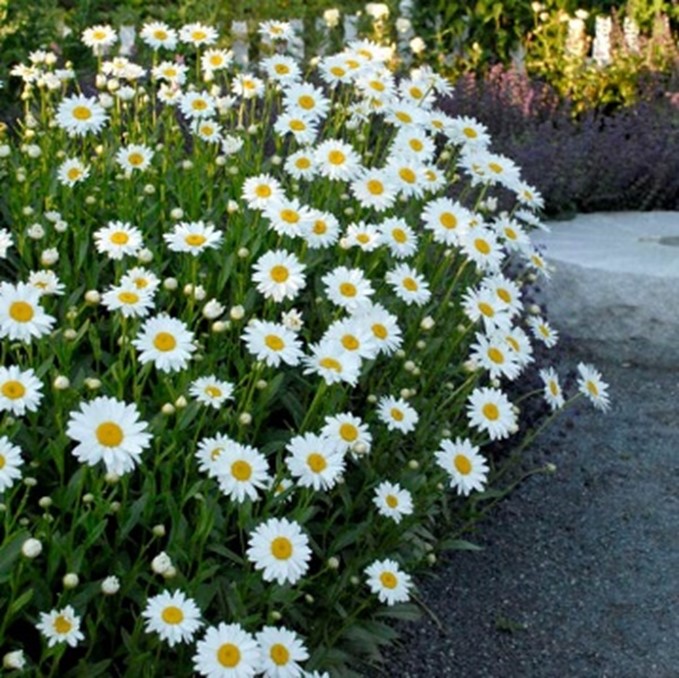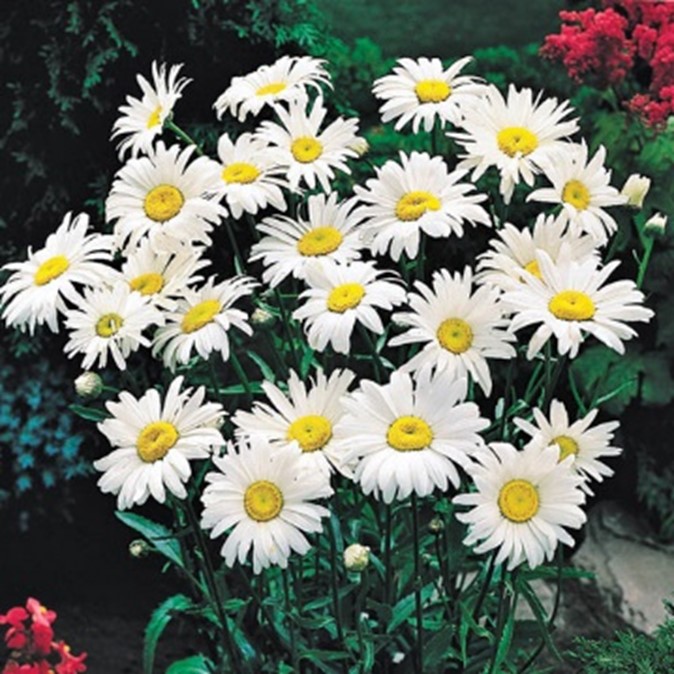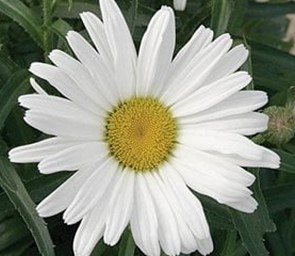Daisy Shasta
Leucanthemum



Characteristics
- Common Name: Shasta daisy
- Type: Perennial
- Family: Asteraceae
- Zone: 5 to 9
- Height: 1.5 to 3 Feet
- Spread: 1.5 to 2 Feet
- Bloom Time: Early Summer – Fall
- Bloom Description: White with Yellow Centers
- Sun: Full Sun
- Water: Dry to Medium
- Maintenance: Medium
- Flower: Showy, Good Cut
- Attracts: Butterflies
- Tolerate: Rabbit, Deer, Drought, Dry Soil
Culture
Daisy Shasta grows easily in average, dry to medium, well-drained soils in full sun. Good soil drainage is essential. Wet soils in winter can be fatal. Tolerates some light shade, particularly in hot summer climates or when plants are being grown in dry soils. Remove spent flower heads to promote additional bloom. Divide clumps as needed every 2-3 years to maintain vigor. Plants are somewhat short-lived. Consider cutting stems back to basal leaves after flowering to preserve plant energies and perhaps prolong plant life.
Noteworthy Characteristics
Beautiful daisy flowers are great for summer bouquets. Also attractive in butterfly gardens or combined with other perennials such as iris, poppy, daylily or yarrow. Remove faded flowers down to the next visible bud to promote re-bloom. Shasta daisy flowers provide perky summer blooms, offering the look of the traditional daisy along with evergreen foliage that lasts year-round in many locations. When you learn how to grow Shasta daisy, you’ll find it to be the perfect, low maintenance perennial for naturalizing and filling in bare spots in the landscape.
Problems
No serious insect or disease problems. Leucanthemums generally have some susceptibility to verticillium wilt, leaf spots and stem rots. Aphids, leaf miners and mites are occasional visitors.
Garden Uses
Shasta daisies provide long-lasting summer bloom and are mainstays of the perennial border, cottage garden and cutting garden. Rock gardens. Containers.